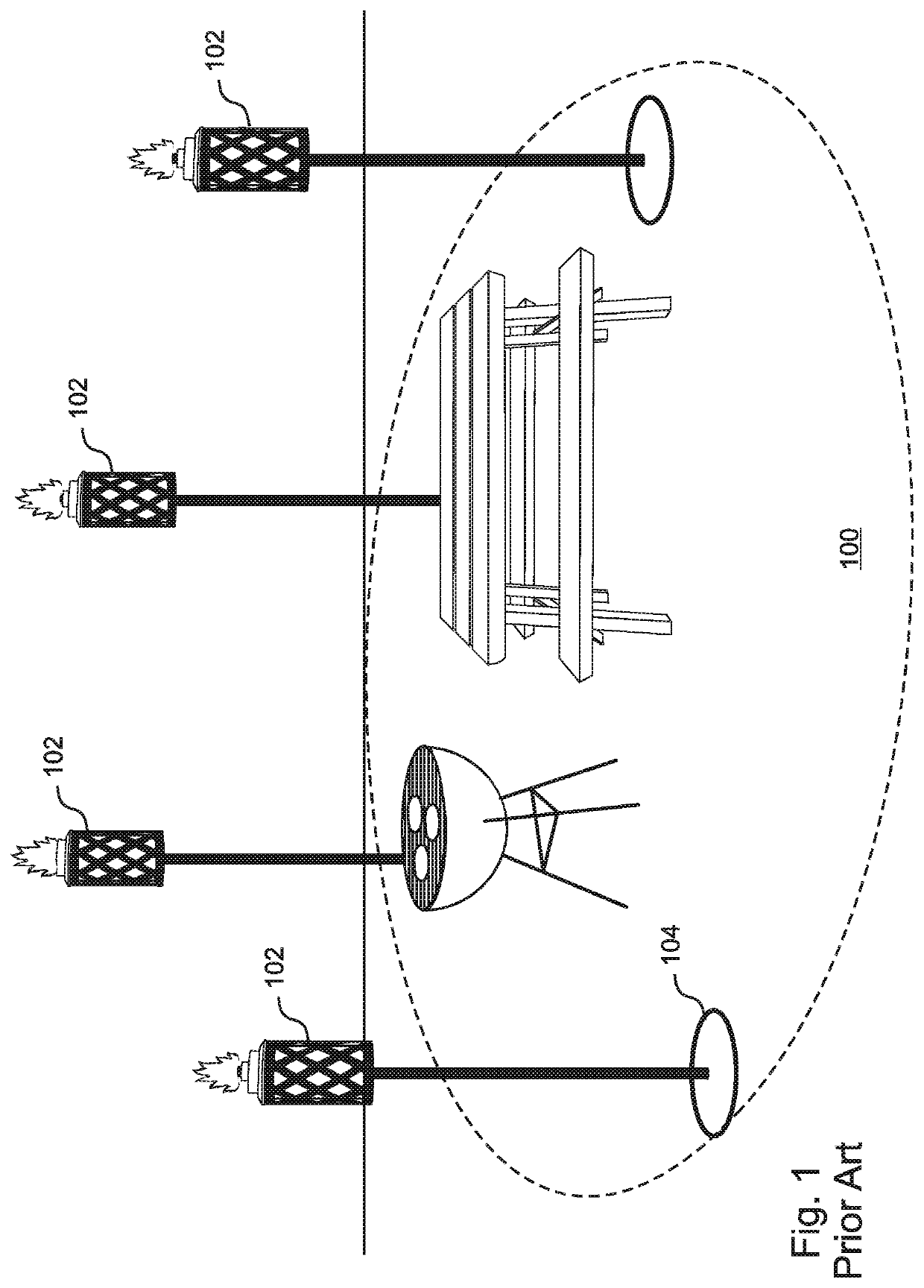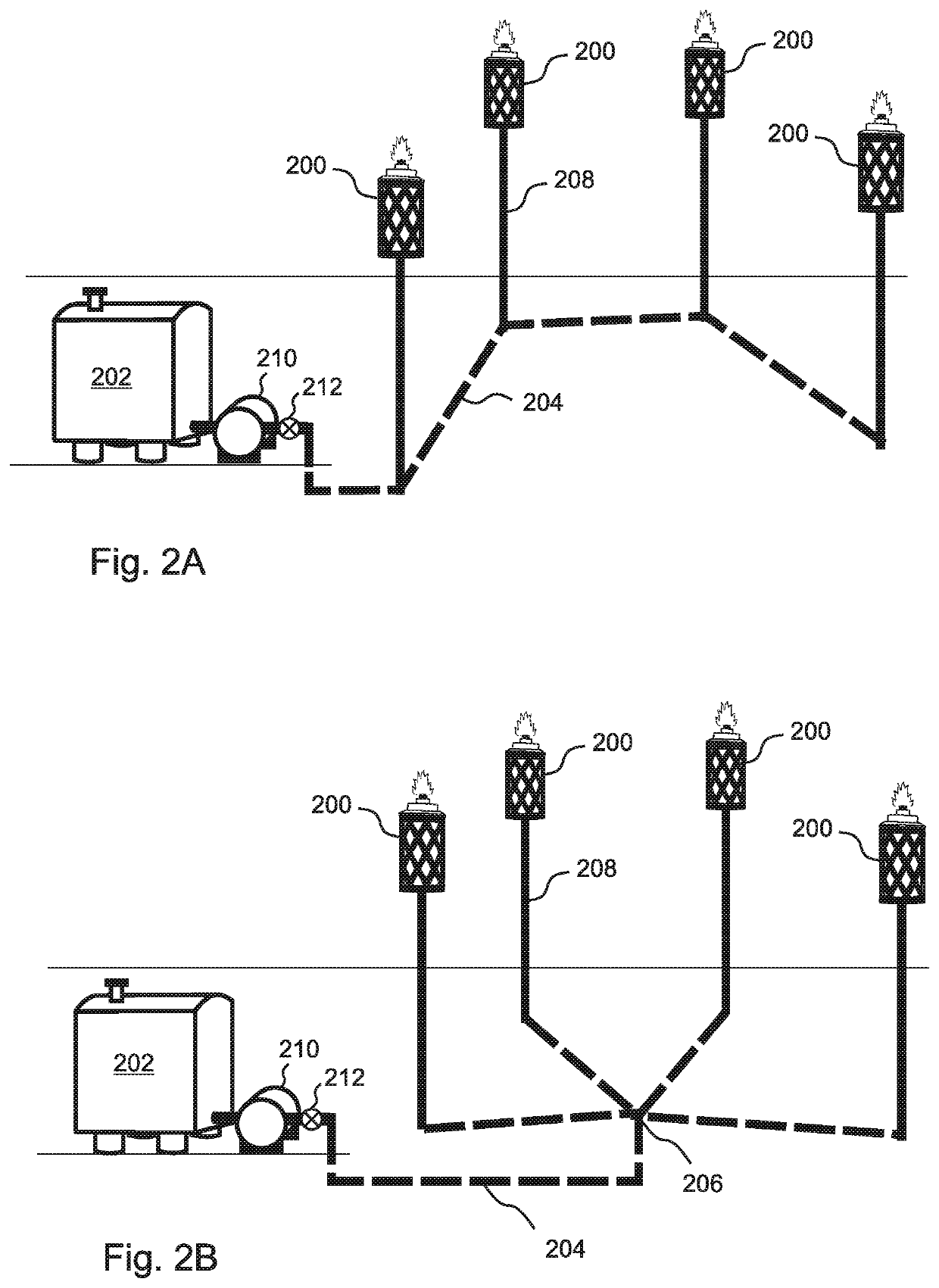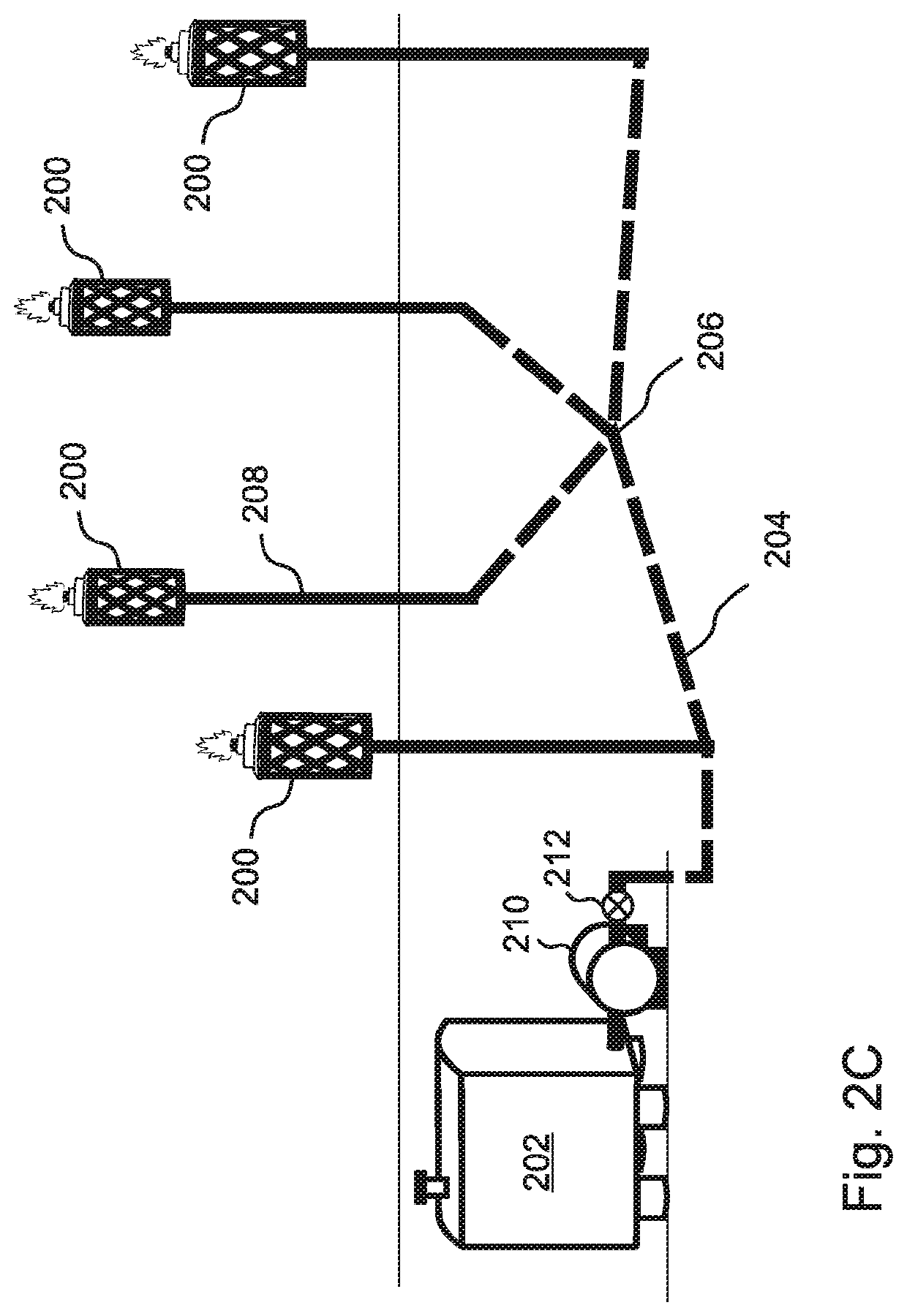Insect repellent torch system with automatic fuel replenishment
a technology of insect repellent and fuel replenishment, applied in the field of insect repellent torch system, can solve the problems of unsatisfactory insect repellent protection, unsatisfactory effect of insect repellent applied to the skin, and the inability to provide adequate insect protection, etc., to achieve undiminished effect of insect repellen
- Summary
- Abstract
- Description
- Claims
- Application Information
AI Technical Summary
Benefits of technology
Problems solved by technology
Method used
Image
Examples
Embodiment Construction
[0056]The present invention is an apparatus and method of repelling insect pests away from an outdoor activity area that does not require direct application of chemicals to the skin, and that can continue to repel insects with undiminished effectiveness for extended periods of time without user maintenance.
[0057]With reference to FIGS. 2A through 2C, the apparatus of the present invention is a system that includes at least one fuel-burning torch 200, where all of the torches are in fluid communication via a fuel plumbing system 204 with a central reservoir 202 of fuel. In embodiments that include a plurality of torches 200, the fuel plumbing system 204 interconnects all of the torches 200 with the central reservoir 202, for example by connecting the torches 200 in series, as shown in FIG. 2A, by connecting all of the torches 200 to a central “hub”206, as shown in FIG. 2B, by a combination thereof, as shown in FIG. 2C, or by any other plumbing configuration known in the art that can ...
PUM
 Login to View More
Login to View More Abstract
Description
Claims
Application Information
 Login to View More
Login to View More - R&D
- Intellectual Property
- Life Sciences
- Materials
- Tech Scout
- Unparalleled Data Quality
- Higher Quality Content
- 60% Fewer Hallucinations
Browse by: Latest US Patents, China's latest patents, Technical Efficacy Thesaurus, Application Domain, Technology Topic, Popular Technical Reports.
© 2025 PatSnap. All rights reserved.Legal|Privacy policy|Modern Slavery Act Transparency Statement|Sitemap|About US| Contact US: help@patsnap.com



